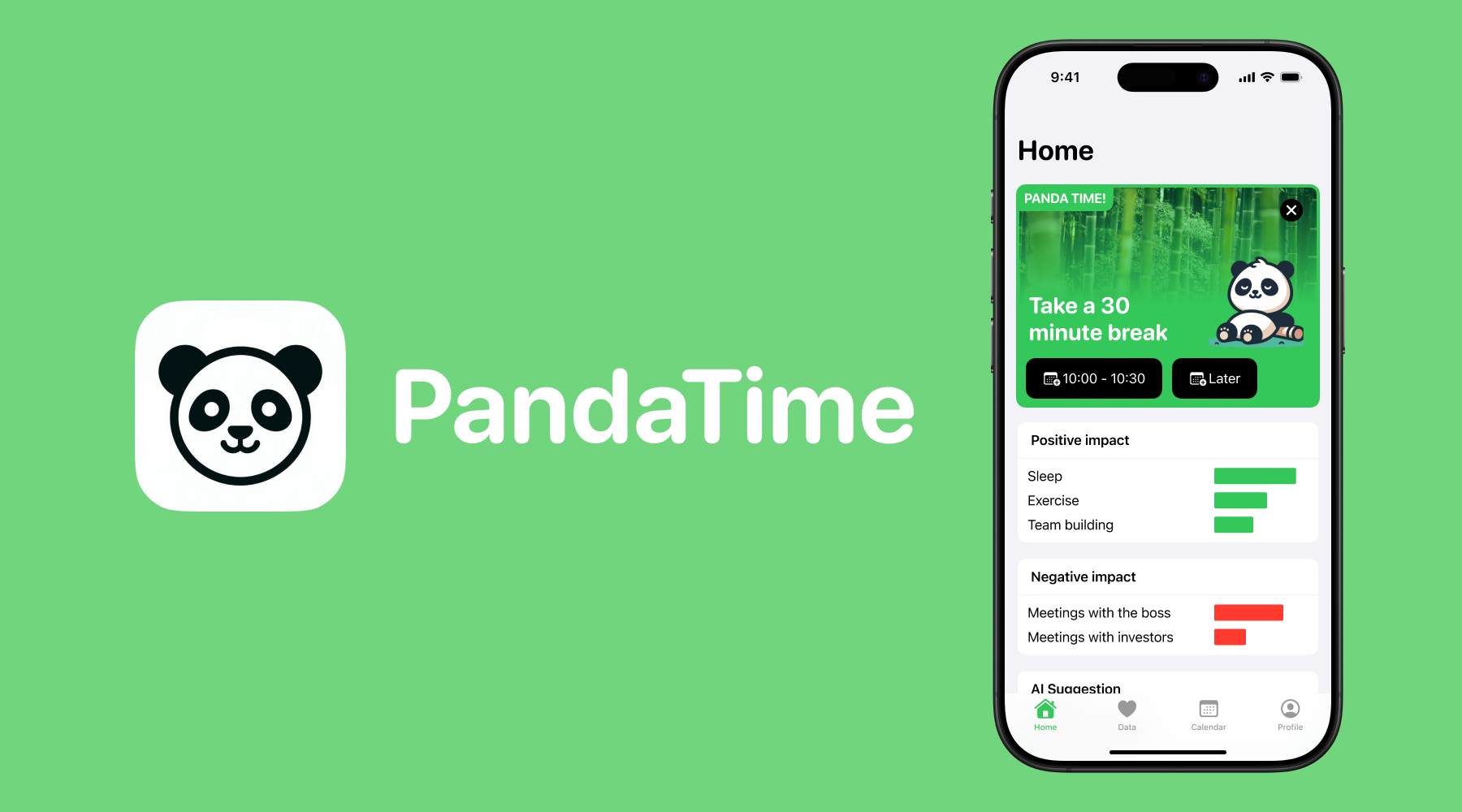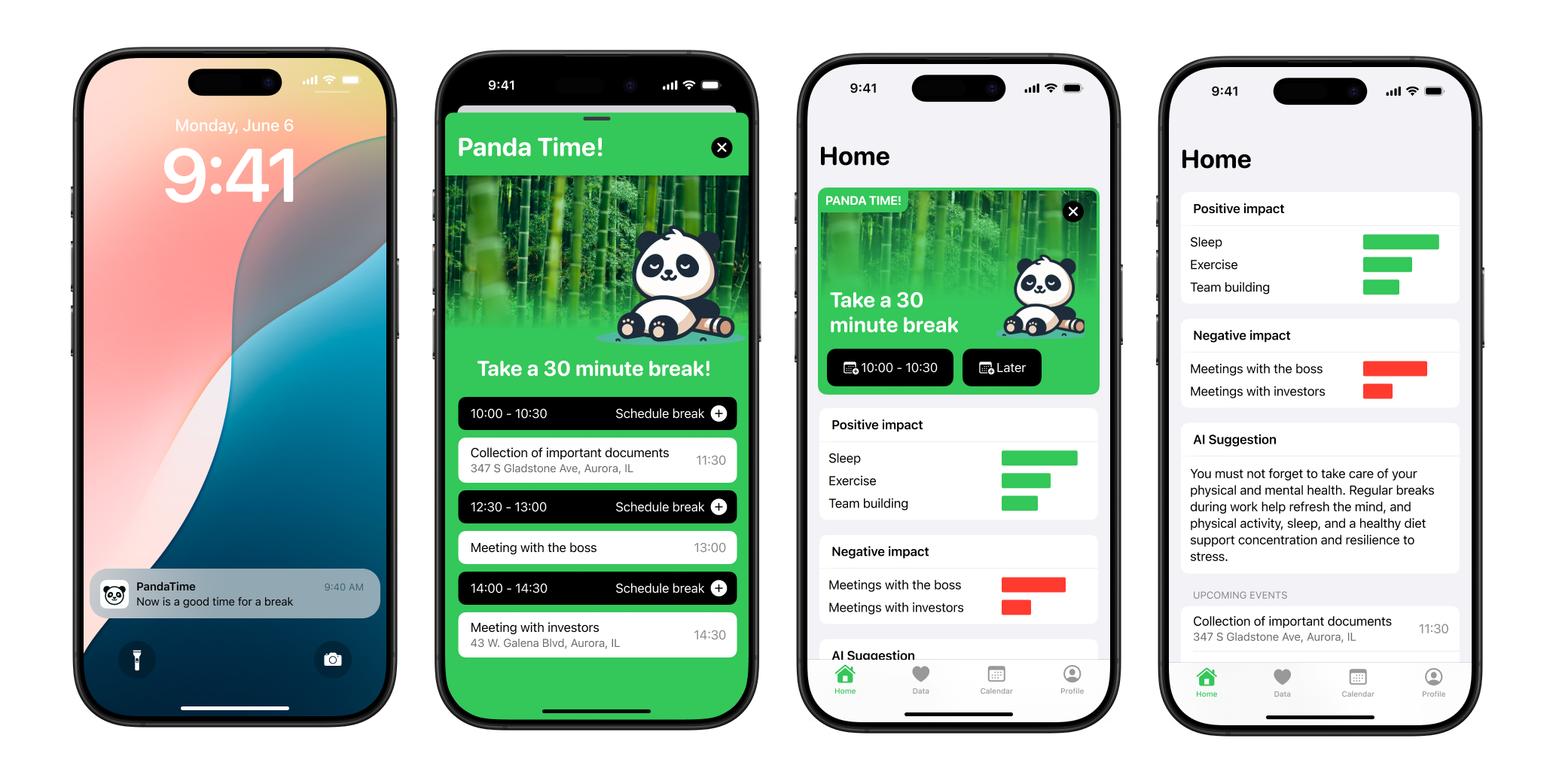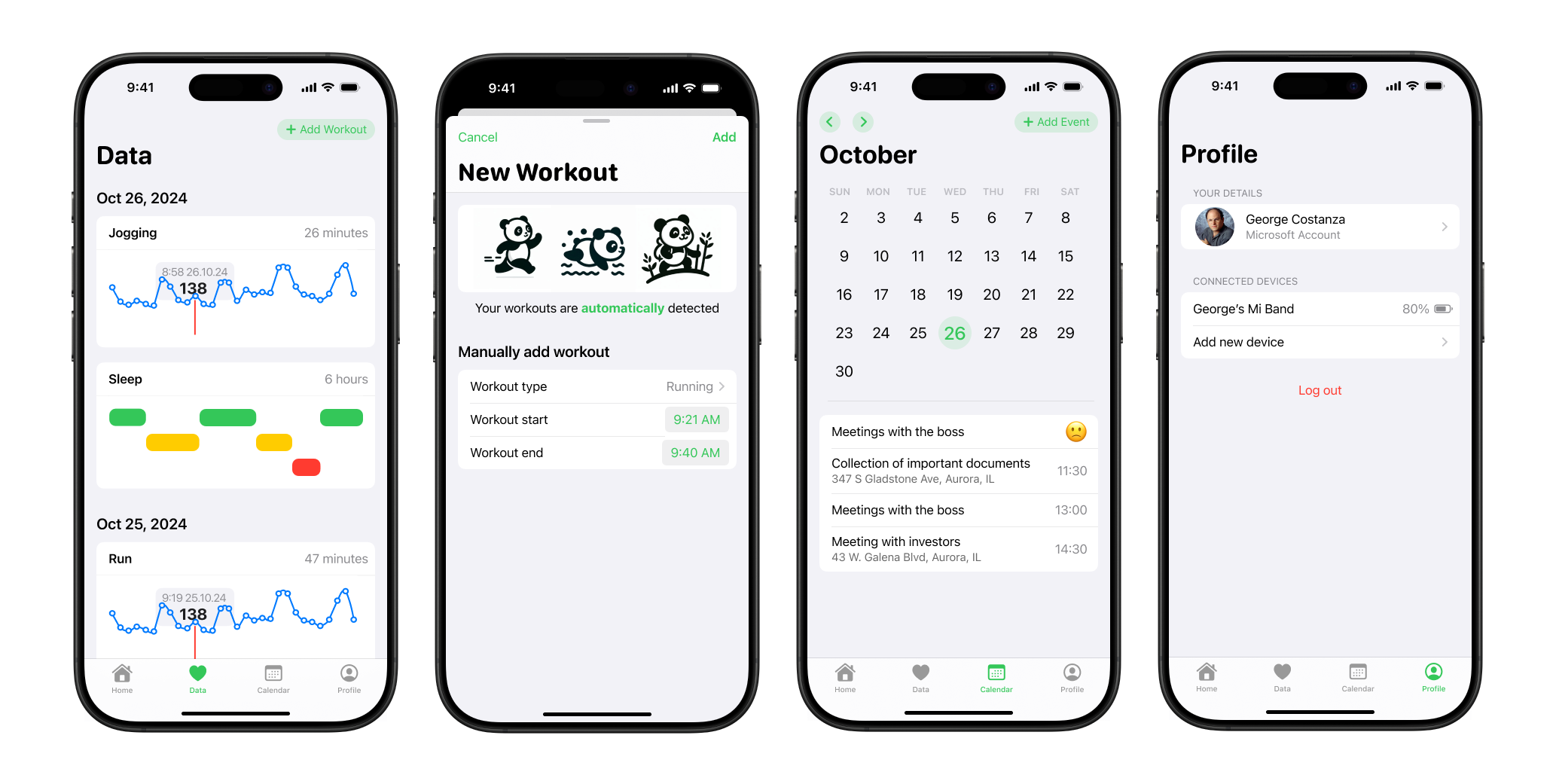PandaTime - Case study

Context
This project was completed as part of a 24-hour hackathon organized by the Innovations Hub Foundation, and was selected as a finalist by the jury. I was responsible for the UX/UI design, and the solution was presented as a pitch deck with mockups, business plans, and system architecture schema.
Problem
In high-demand work environments, employees often face stress, fatigue, and difficulty managing their schedules, leading to burnout and reduced productivity. Lacking guidance on when to take breaks or adjust routines, they struggle to balance work and health effectively. The solution should provide real-time monitoring of physical and emotional well-being — including sleep quality, stress, and activity levels — and offers personalized suggestions for breaks, flexible hours, and time off to improve well-being, reduce burnout risk, and support a healthier work-life balance.
Solution
After conducting thorough research on competitor apps, we noticed that employee wellbeing platforms either focus solely on wellbeing or use real-time monitoring to provide gamification. However, none offered a solution that connects an employee's calendar with their health and wellness data. With this connection, there is an opportunity to provide suggestions without requiring manual input. Identifying this gap, we decided to pursue an idea that integrates scheduling with wellbeing insights, aiming to help employees balance their work commitments with their personal health more effectively.

Our solution was PandaTime - an app that uses your calendar and health sensors to determine the best times to suggest breaks. When you receive a notification, you can choose when you'd like to take a break, with suggestions tailored to your daily work schedule. Thanks to the calendar integration, there's no need for manual input and the app determines factors which have positive or negative impacts on you, along with suggestions for possible improvements.

The app also offers an overview of physical activities and sleep patterns, which are recorded automatically. Users can view their calendar with mood assessments for past events. They log into the app with their work account and can connect both personal devices and those provided by their employer.


